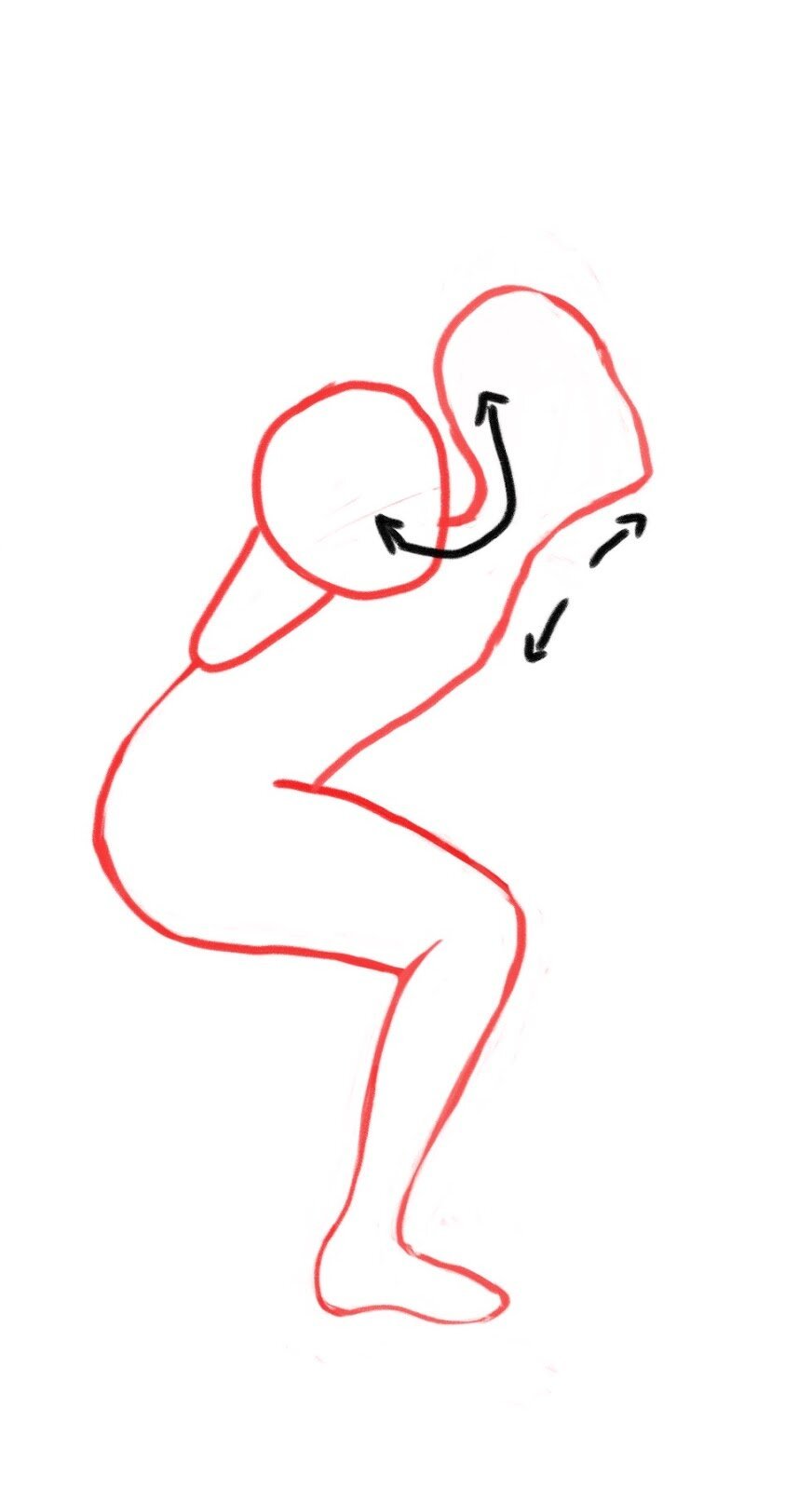Mastering the Back Squat: Part 1
Squatting is one of the most important movement patterns that we perform in the gym and in everyday life! We assess squat technique on all of our patients with lower body pain and/or dysfunction. We find that a lot of our patients have difficulty squatting and that their form could be leading to the pain that they are experiencing. Not to worry- we are the movement experts you need! We will assess your form, make adjustments, and incorporate manual therapy and exercise interventions to promote a better, pain free squat!
In this 2-Part blog series, we discuss back squat compensations, why they could be happening, and how to correct the issue(s), leading to a better back squat! In Part 1 we will cover all the above, in text. Part 2 will include the videos associated with how to fix each potential issue. We hope you enjoy it:
1. Compensation:
Butt Wink / Excessive Lower Back Flexion
Reason: excessive posterior pelvic tilt (PPT), squatting too deep, lumbar spine in flexion, lack of lumbar control, tight iliotibial band (ITB), lack of hip flexion
How To Fix It: increasing hip depth/flexion, increasing hamstring, gluteal and posterior hip capsule mobility, improving lumbopelvic stability
2. Compensation:
Low Back Hyperextension
Reason: insufficient core stability, excessive rib flare, overuse lumbar extensors, hip extensor weakness, tight lats/pecs, tight hip flexors forcing anterior pelvic tilt
How To Fix It: improve lumbopelvic/core stability, improve hip extensor strength, stretch hip flexors, stretch lats & pecs
3. Compensation: Mid-Back Rounding
Reason: insufficient thoracic extension, protracted scap (not engaging scap retractors/lats/rhomboids/traps,) gaze too low, weak thoracic paraspinals
How To Fix It: improve thoracic spine extension, shoulder mobility (especially into external rotation), recruitment of scapular retractors (middle traps, rhomboids, lower traps)
4. Compensation: Neck Hyperextension
Reason: not engaging deep neck flexors, poor postural awareness, gaze location, lack of thoracic extension
How To Fix It: improve thoracic spine extension, recruitment of deep neck flexors, stretching of suboccipitals, visual cues via mirror for postural awareness
5.
Compensation: Knees too far forward/tibial translation
Reason: less hip flexion, not sitting back far enough (awareness), quad dominance, poor gluteal engagement, insufficient posterior chain force, ankle/calf mobility
How To Fix It: chair squats/taps, visual cues, improving hip depth, gluteal/hip extensor strengthening, calf/ankle joint stretching/mobility drills
6.
Compensation: Knee Collapse (Valgus)
Reason: lack of hip ER due to either gluteal motor control/strength, pronated feet, lack of ankle mobility
How To Fix It: gluteal strengthening and motor control training, ankle dorsiflexion mobility, over the counter (OTC) orthotics. We like these Powerstep insoles.
7.
Compensation: Squatting with toes lifting (poor grounding)
Reason: lack of closed chain dorsiflexion, soleus tightness
How To Fix It: gatroc/soleus stretching, improving talocrural joint mobility, orthotics, heels elevated, appropriate heel lift/shoe wear
If you or anybody you know has pain with squatting (or is interested in improving their squat mechanics to prevent future injury) please reach out to us at (347)560-6920.
Dr. Paul Nasri, PT, DPT
Doctor of Physical Therapy
Sarrica Physical Therapy & Wellness
Staff Physical Therapist
Dr. Shiri-lee Uriel, PT, DPT,CSCS
Doctor of Physical Therapy
Sarrica Physical Therapy & Wellness
Staff Physical Therapist








